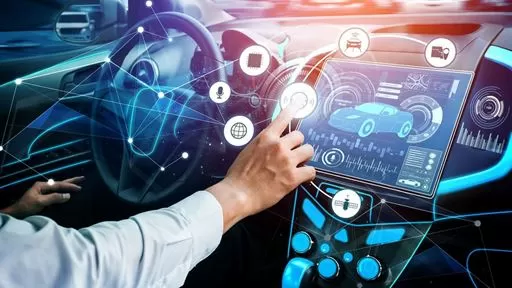“Let’s Go!” – The Future of Software-Defined Vehicles
The automotive industry is constantly evolving and with the rise of technology, we are now witnessing a new era of smart vehicles. Software-defined vehicles (SDVs) are the latest innovation that is set to revolutionize the way we drive. These vehicles are essentially like smartphones on wheels, but with a lot more potential.
So, what exactly are software-defined vehicles? In simple terms, SDVs are cars that have their core functions, such as steering, braking, and acceleration, controlled by software. This means that the traditional mechanical components are replaced by electronic systems, making the vehicle more efficient, safe, and connected.
The concept of SDVs is not entirely new, as we have already seen the introduction of features like lane assist, adaptive cruise control, and self-parking in modern cars. However, with the advancement of technology, SDVs are taking things to a whole new level. These vehicles are equipped with sensors, cameras, and advanced algorithms that allow them to analyze data and make decisions in real-time.
One of the main benefits of SDVs is safety. With the use of sensors and cameras, these vehicles are able to detect and respond to potential hazards on the road. This can significantly reduce the number of accidents caused by human error. In fact, a study by the National Highway Traffic Safety Administration (NHTSA) found that 94% of accidents are caused by human error. With SDVs, we can expect a significant decrease in this number, making our roads safer for everyone.
But safety is just the tip of the iceberg when it comes to the potential of SDVs. These vehicles have the ability to communicate with each other and with the surrounding infrastructure, creating a connected network of vehicles. This will not only improve traffic flow but also reduce fuel consumption and emissions. Imagine a world where your car can communicate with the traffic lights and adjust its speed accordingly to avoid unnecessary stops and starts. This will not only save time but also reduce fuel consumption, making our cities greener.
Moreover, SDVs have the potential to change the way we think about car ownership. With the rise of ride-sharing services and the concept of mobility as a service (MaaS), we are moving towards a future where owning a car may no longer be necessary. SDVs can be used as part of a fleet, providing on-demand transportation services to people. This will not only reduce the number of cars on the road but also decrease the need for parking spaces, freeing up valuable land in cities.
With all these benefits, it’s no wonder that major players in the automotive industry are investing heavily in the development of SDVs. Companies like Tesla, Google, and Uber are already testing their own versions of SDVs on the roads, and it’s only a matter of time before we see them become a common sight.
But the development of SDVs is not without its challenges. One of the main concerns is the potential for cyber attacks. With all the electronic systems controlling the vehicle, there is a risk of hackers gaining control and causing accidents. This is why it is crucial for car manufacturers to prioritize cybersecurity and constantly update and improve their systems.
Another challenge is the cost. The technology used in SDVs is still relatively new and expensive, making it difficult for the average consumer to afford. However, as with any new technology, we can expect the costs to decrease as it becomes more mainstream.
In conclusion, software-defined vehicles are the future of transportation. They have the potential to make our roads safer, reduce traffic congestion, and improve our overall driving experience. The automotive industry is just scratching the surface of what is possible with SDVs, and we can’t wait to see where this technology takes us. So, let’s buckle up and get ready for an exciting ride into the future of transportation. Let’s go!



